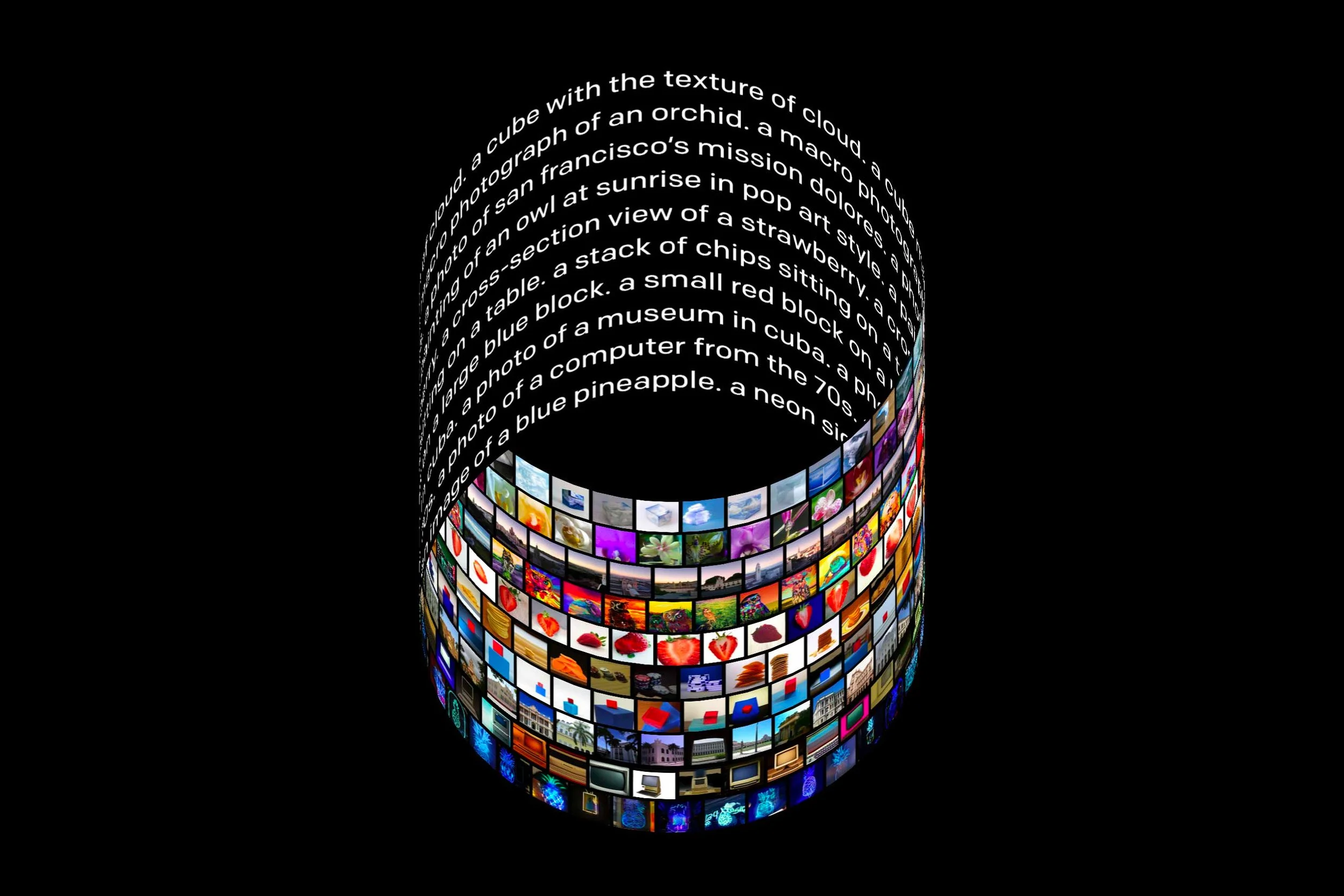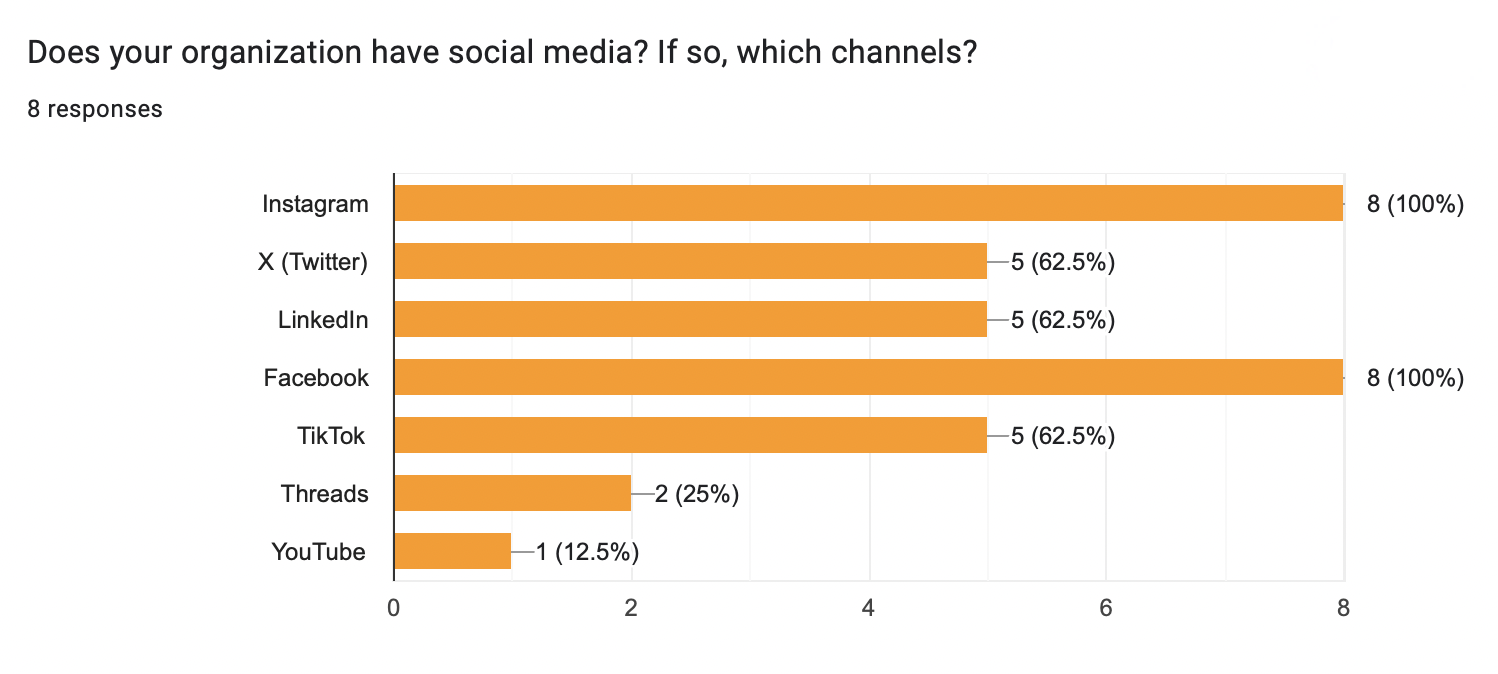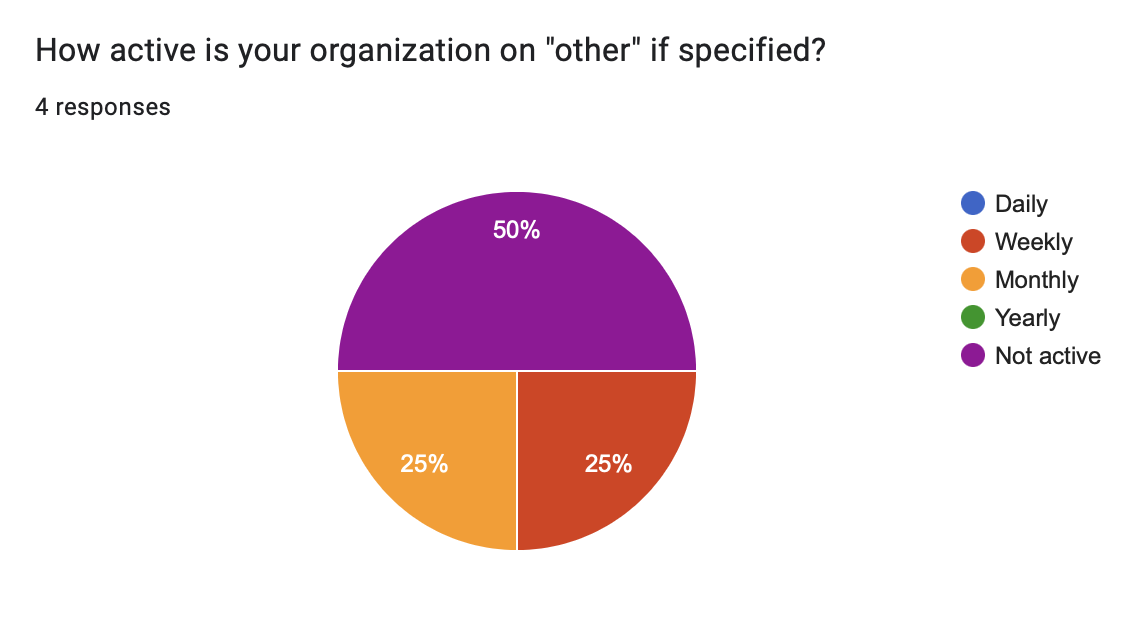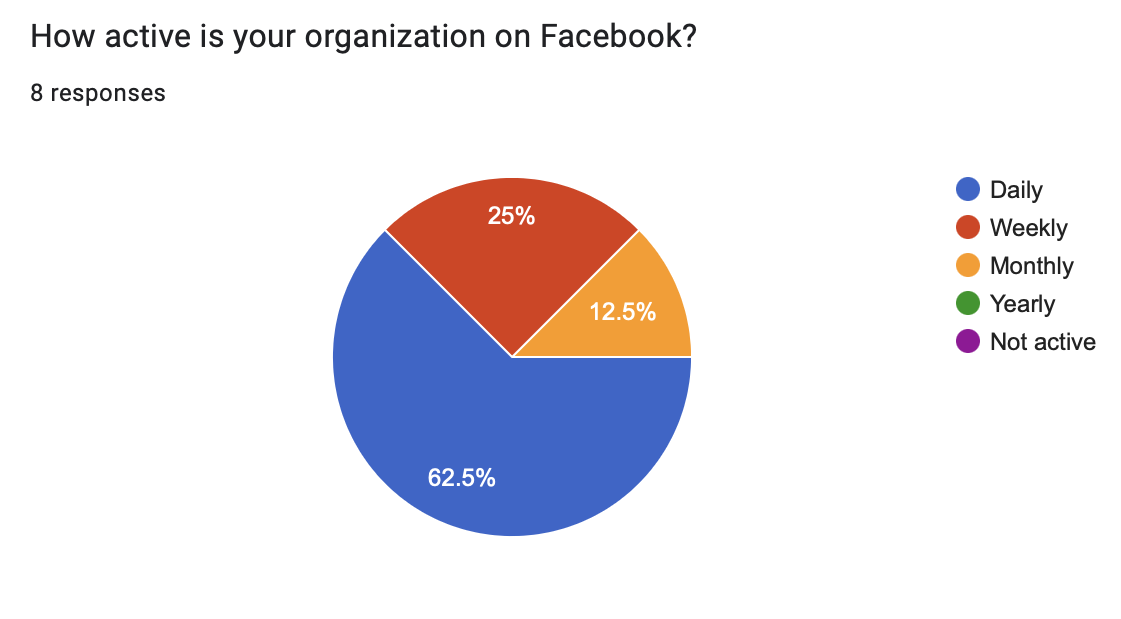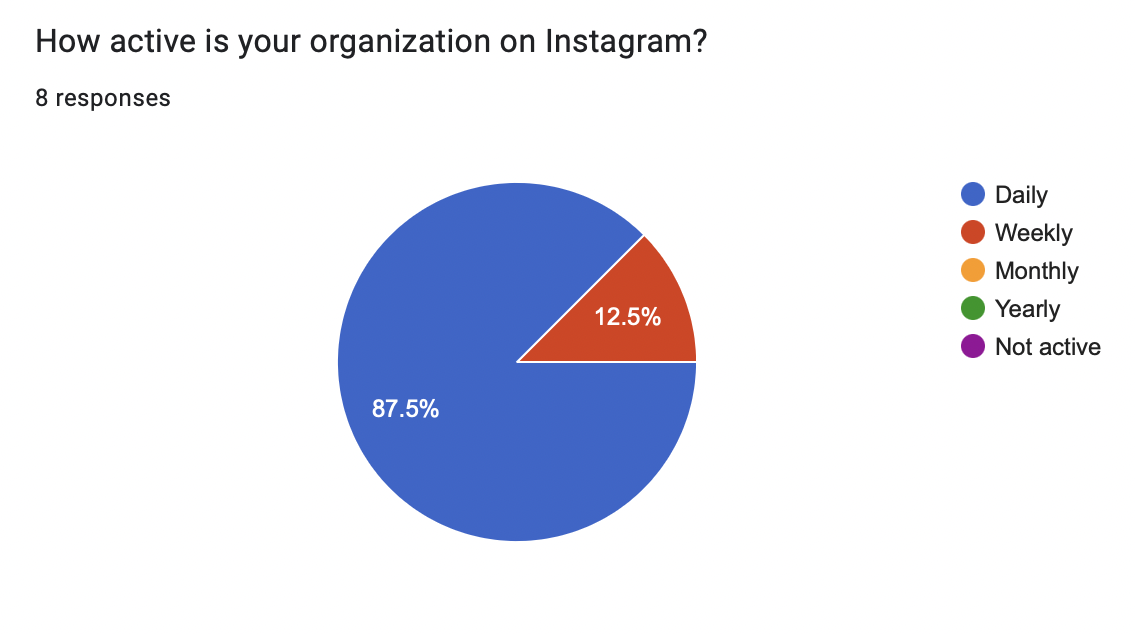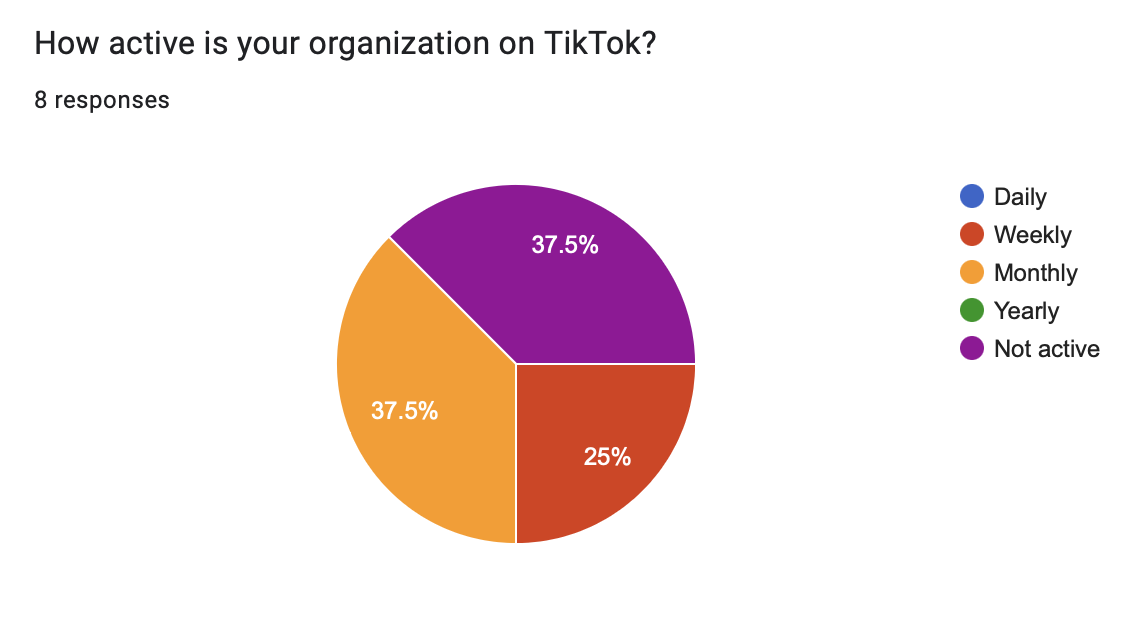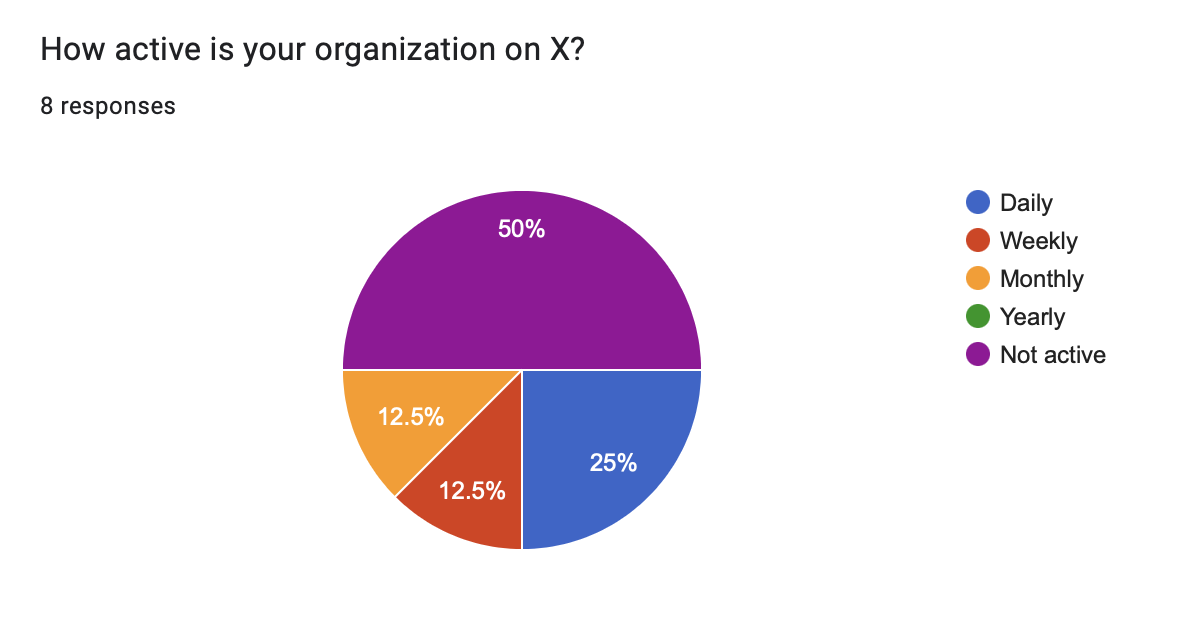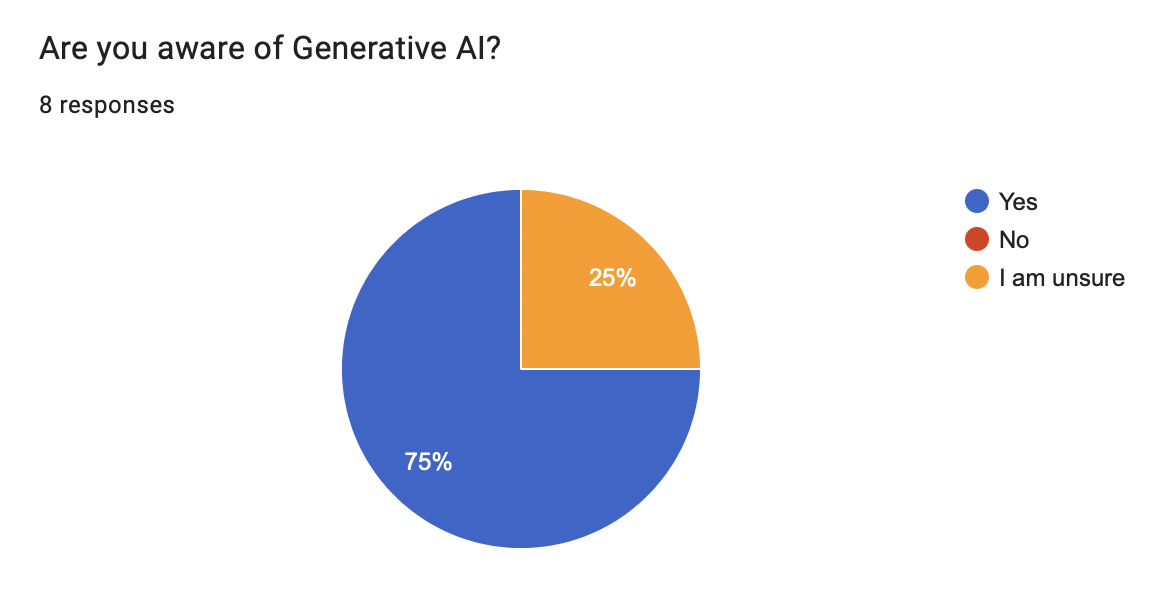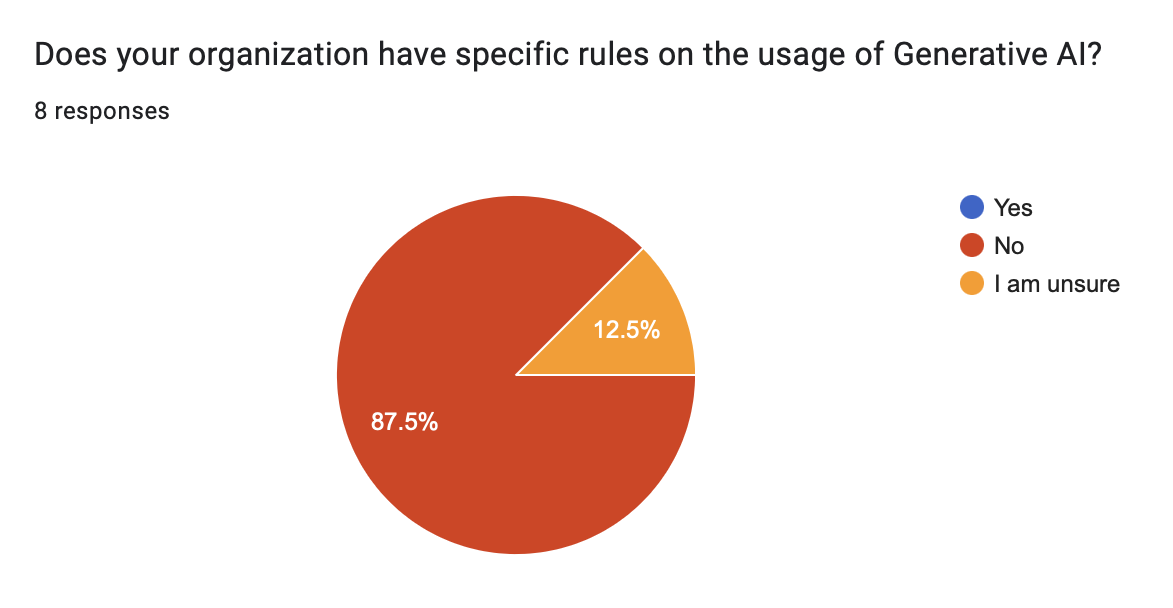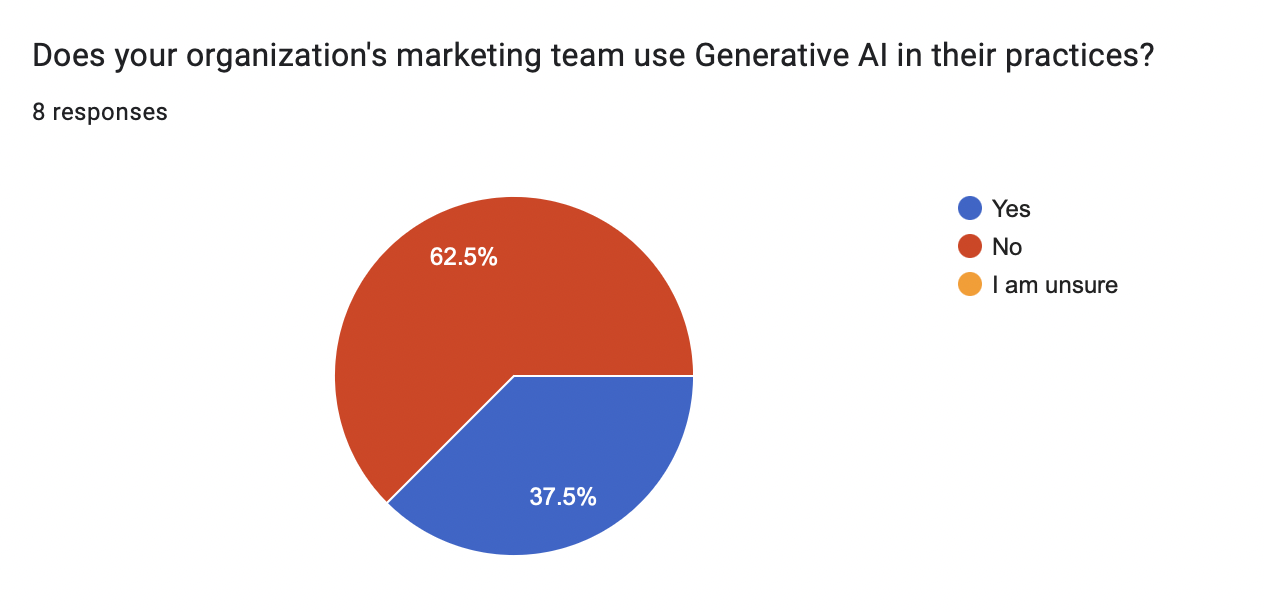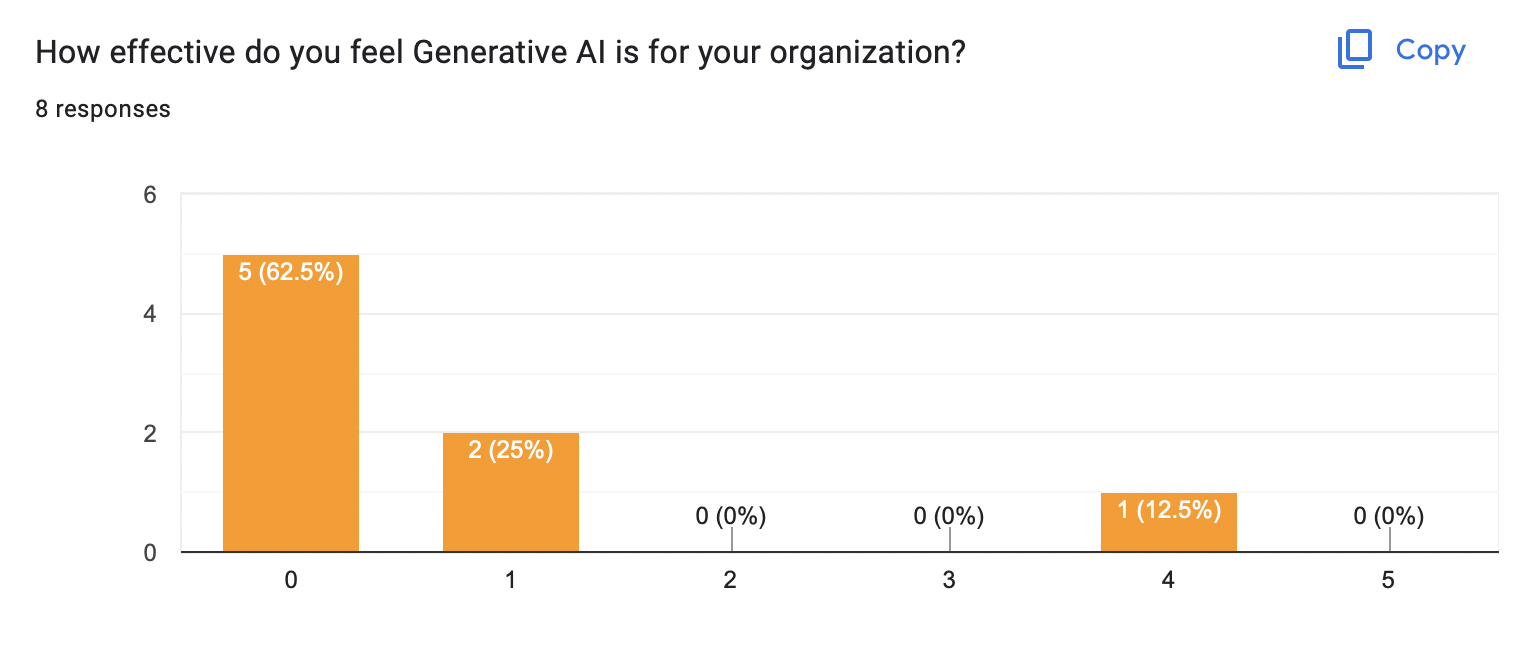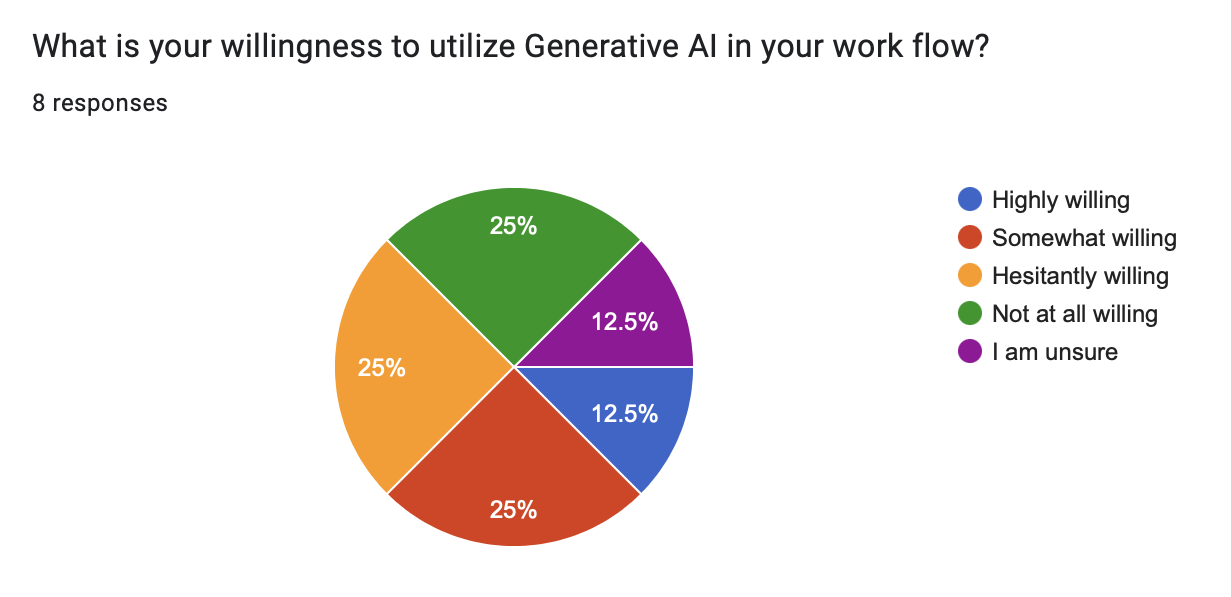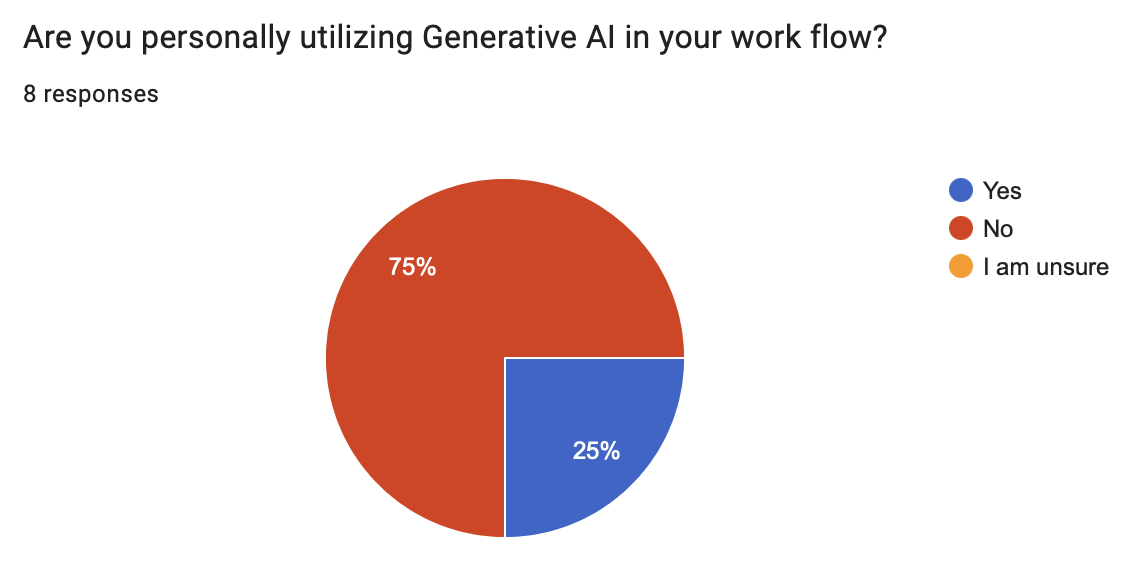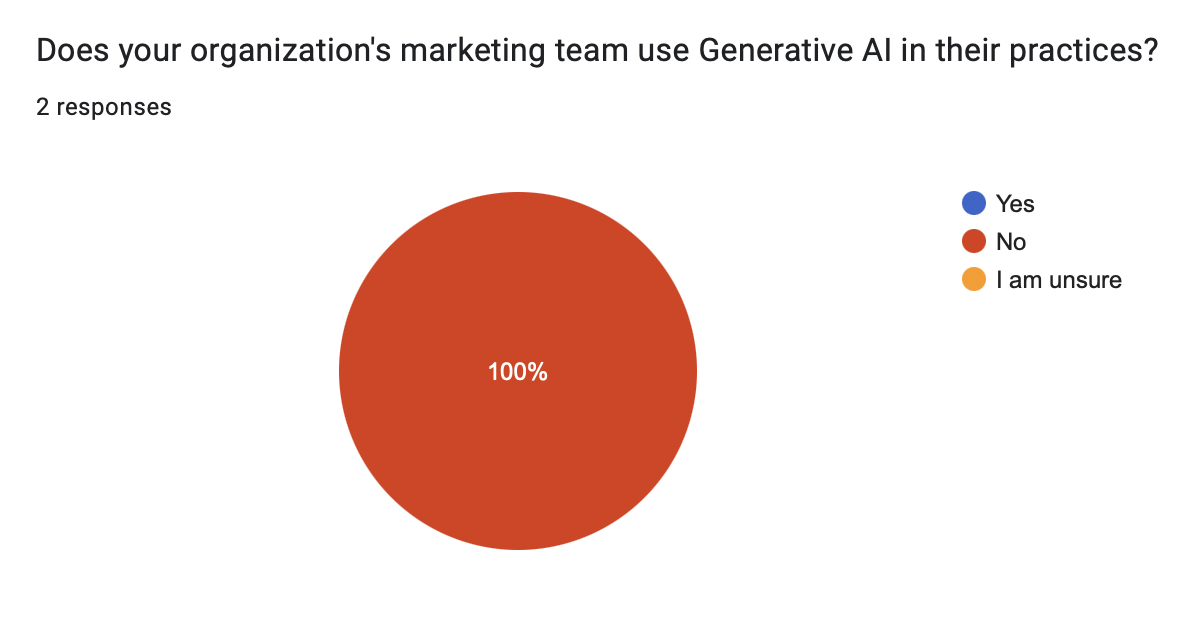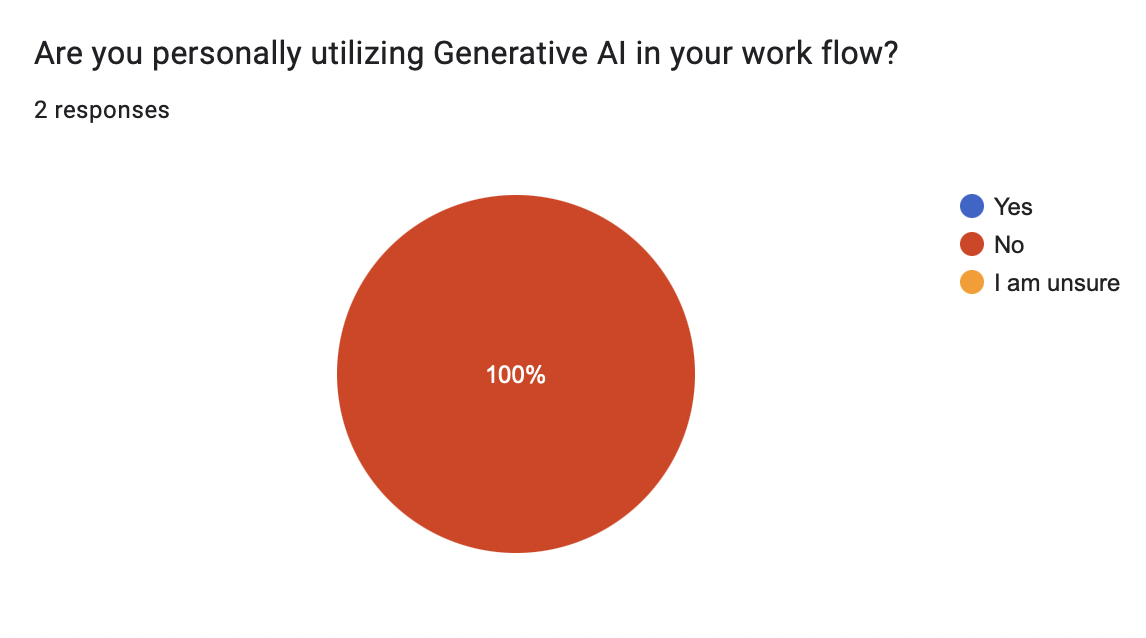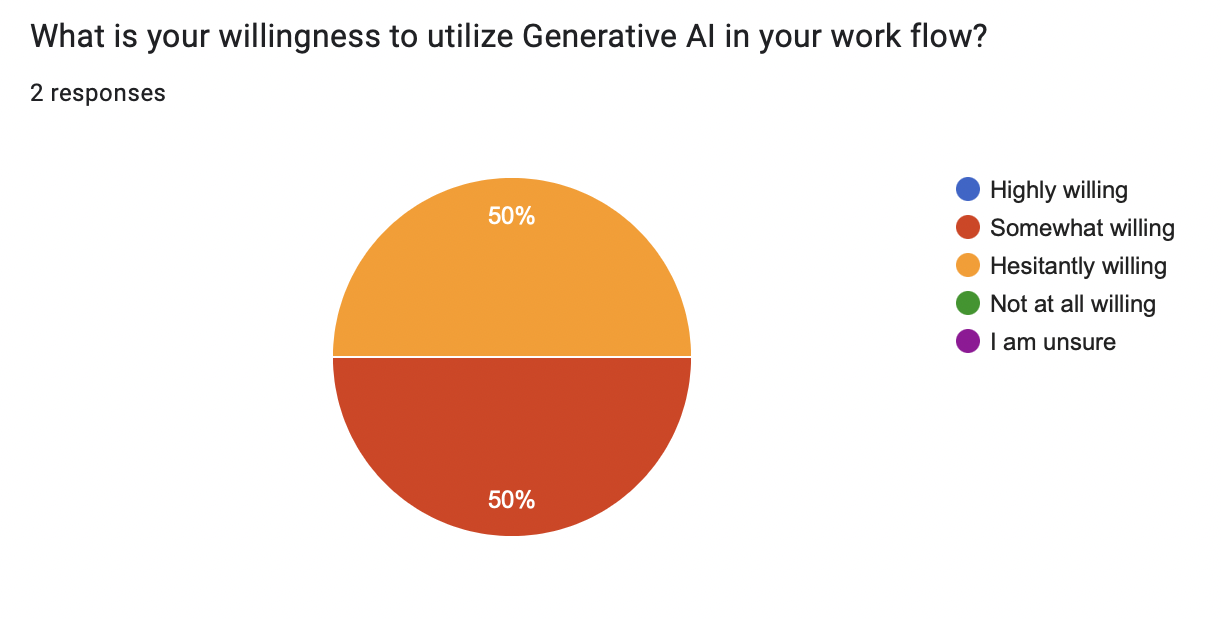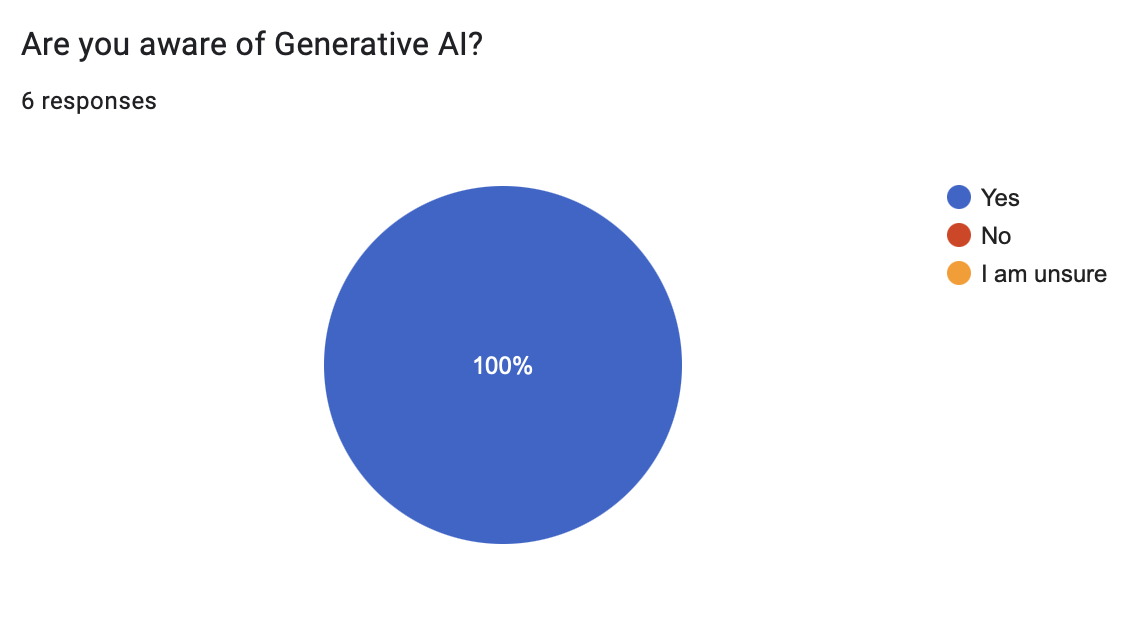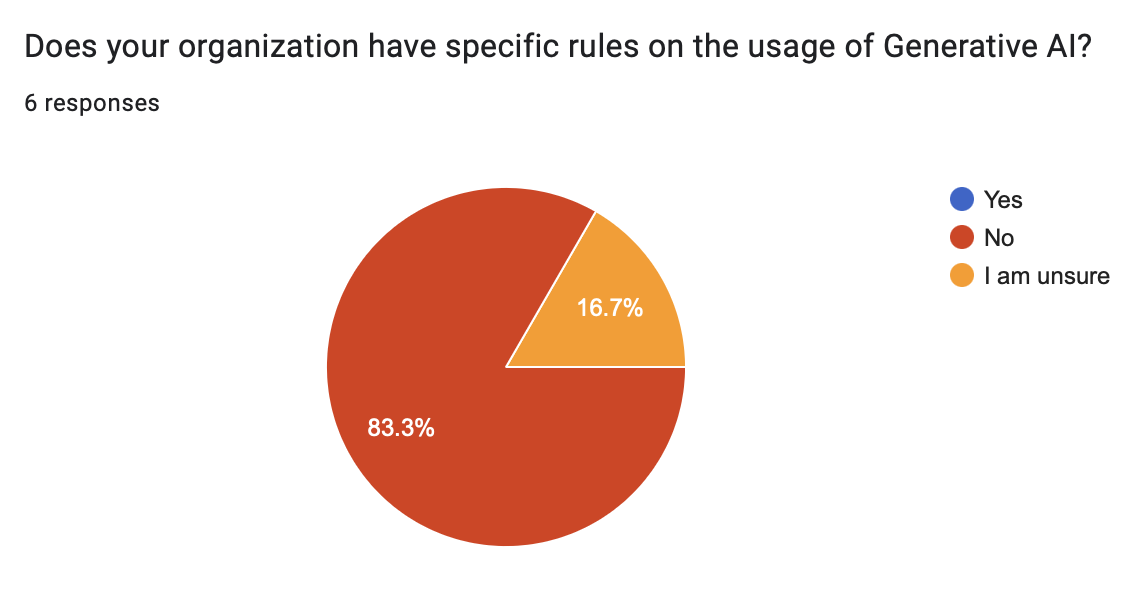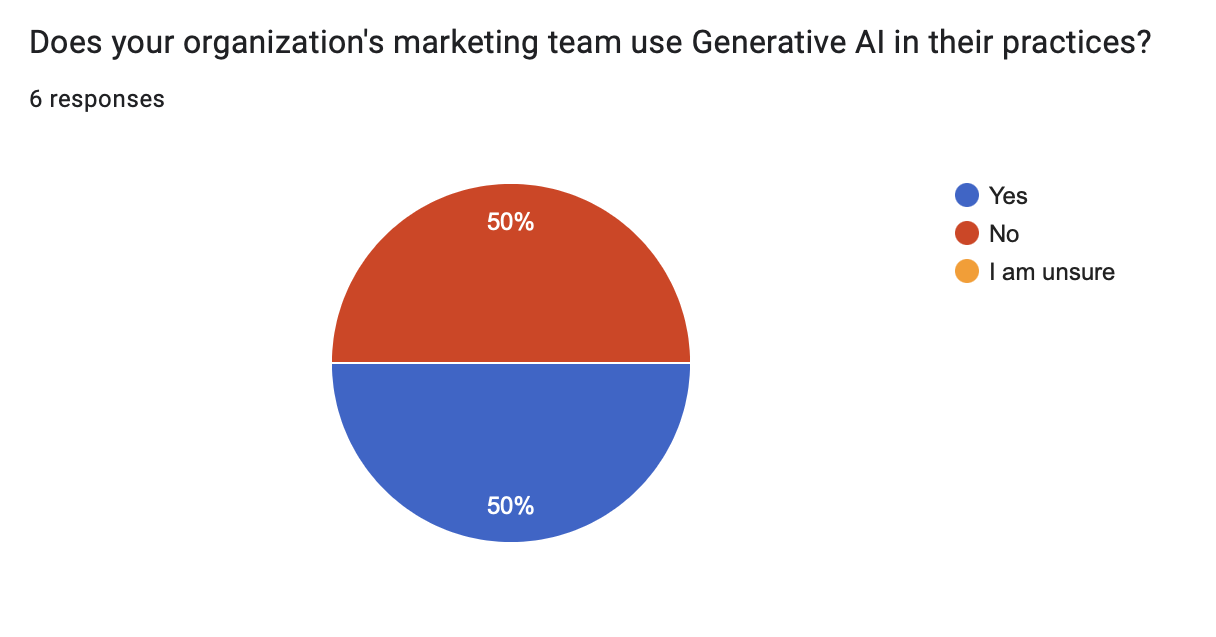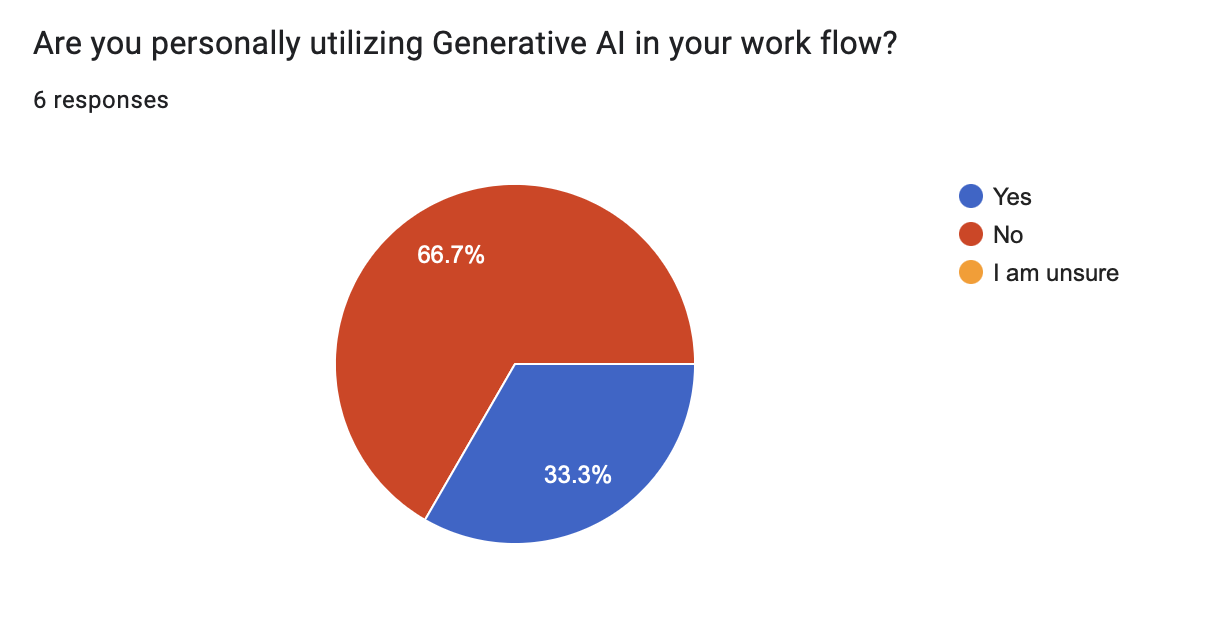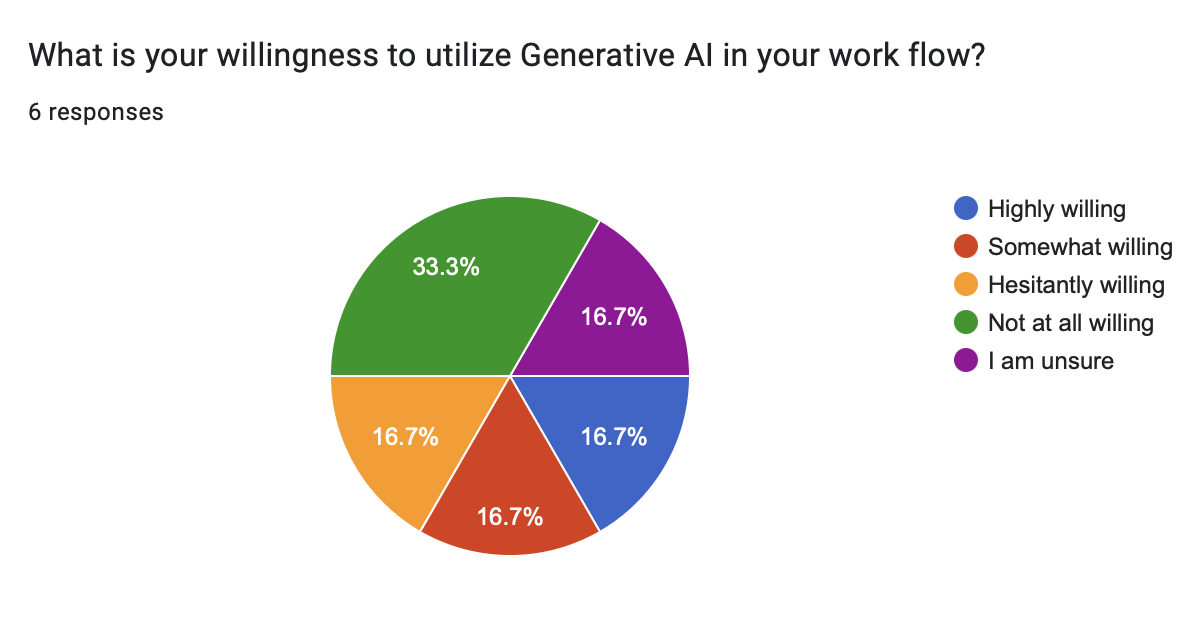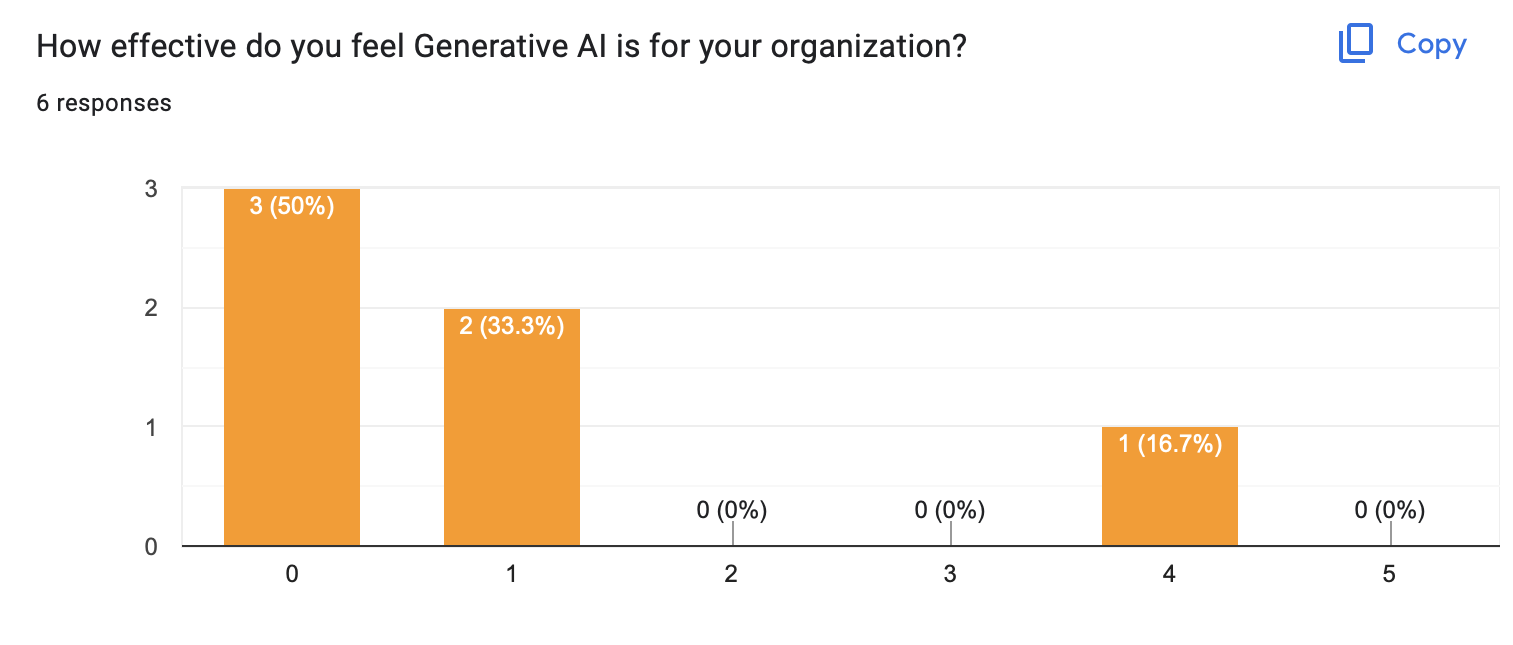INTRODUCTION AND RECAP OF GENERATIVE AI IN MARKETING
Marketing managers are tasked with the challenge of remaining relevant in a rapidly changing society. Thanks to advances in technology that help to push the boundaries and the capabilities of our marketing efforts, marketing managers, particularly those in the arts, have a better chance of being able to keep up with the social media giants. The use of generative AI (GenAI) tools is becoming increasingly prevalent in marketing, which can be particularly useful for smaller organizations or nonprofits seeking innovative ways to engage audiences and improve workflow efficiency. These tools offer various functionalities such as text, video, and image generation, strategic posting schedules, customer service support, and personalized advertising and recommendation systems. While much attention has been given to its application in B2C marketing, there are also significant benefits for B2B marketers, particularly in driving conversions and crafting compelling narratives. Overall, GenAI presents marketers with a potential toolkit to enhance content creation and marketing campaign effectiveness. However, it isn’t all sunshine and rainbows. Obviously the use of any artificial intelligence comes with the question of if the material being used was ethically sourced, which may result in organizations deciding to opt-out of using it in their marketing strategies. In addition to this, those who use GenAI tools like ChatGPT in a professional manner risk being sued for, “-infringe[ment] on intellectual-property rights, creat[ing] defamatory content, and breach[ing] data-protection laws.” For the purposes of this article, I reached out to various museum professionals to understand IF and HOW their organizations are using generative AI in their marketing workflows.
Image: Generative AI and brands—marketing guide to ChatGPT, DALL-E and other AI
Source: Ad Age
SURVEY CREATED FOR MUSEUM PROFESSIONALS
As we move deeper into the digital age and with the progression of tools like GenAI, I found myself curious about whether or not museum professionals are utilizing GenAI in their marketing workflow, and if so… how? To explore this, I created a simple 22-question survey and sent it through various means (direct email, social media direct messages, form fills, etc.) to 38 museum organizations: 14 from Pittsburgh, 5 from D.C., 1 from California, 4 from New York City, & 14 from Cleveland. I originally wanted to email museums that I considered to be “ahead of the curve” based on technology and the implementation of it into their museum, hence many of the museums being from NYC, D.C., and California. However, as there were few responses back from these “museum giants,” I decided to take an alternative approach and focus on two Midwest cities, Pittsburgh and Cleveland, that are largely known for their artistic vibrancy. Both have SMU DataArts vibrancy rankings of 90+ and similar populations, with Pittsburgh and Cleveland having roughly 303,000 and 362,000 residents, respectively. I contacted an even number of organizations in both Pittsburgh and Cleveland. I received 6 responses from Pittsburgh museums and 2 from Cleveland museums. For the privacy of the respondents, all organizations will remain anonymous for the purpose of this study. Although this analysis is not considered to be statistically representative of all museums in each respective city, it is still useful to make a comparison of the museums who responded to better understand their varied marketing resources, strategies, and belief systems.
Of those who answered and were comfortable with sharing their title within their organization, the distribution concerning the professional title of those who answered the survey is the following: Marketing Project Manager, Program and Marketing Coordinator, Chief Marketing Officer, Director of Marketing, 2 Executive Directors, and 2 who preferred to remain anonymous. In addition to this, 5 respondents were from arts organizations and 3 respondents were from educational organizations. Regardless of this, all are still recognized as “Member Museums” by the American Alliance of Museums.
WHAT ARE THE MUSEUM PROFESSIONALS SAYING ABOUT GENERATIVE AI?
To better understand what the museum professionals are saying about their organization’s use of GenAI in their marketing strategy, the survey began with baseline questions about the organization’s social media channels and usage. Overall, all 8 of the organizations have Instagram and Facebook, while 5 of them have X, LinkedIn, and TikTok. Of respondents who identified use of “Other” channels, 2 specified using Threads and 1 using YouTube.
Digging into this a little deeper, the following distribution shows how active organizations are on their respective social media channels:
*All graphs from this point represent data collected by author and then created by author through Google Forms.
After gaining an understanding of which social media platforms the organizations had and were active on, the survey moved to GenAI, including their awareness of it, use of it, and thoughts on it. Of the respondents, 6 were aware of generative AI and 2 were unsure of the topic, which would likely affect the following questions as well. Moving beyond this, 7 of the respondents specified that their organization does not have specific rules on the usage of GenAI, while 1 was unsure if rules exist.
5 respondents stated that their organization’s marketing team does not use GenAI in their practices, while 3 stated that they do. Of those who specified that they do, the following quotes were provided as rationale:
“-brainstorming, reviewing other / competitor ads, summarizing data sets or notes, etc. We are just exploring it, not actively using it.”
“A few of us in the marketing department use AI to assist us with ideas and brainstorming. AI has helped us find new language to use to promote recurring events/programs in new ways.”
“Generate language and sometimes we use Canva's AI tools? But we do not love them.”
In addition to this, on a scale of 0 (Not at all effective) to 5 (Highly effective), 5 respondents gave a score of 0, stating that they do not feel GenAI to be useful at all for their organization, 2 respondents ranked it as a score of 1, and 1 respondent ranked it as a score of 4. Overall, this shows an underwhelming sentiment towards GenAI. Of those who specified these rankings, the following quotes were provided as rationale:
“Generative AI, as it is currently, often resorts to average, expected, and kitschy language when given different comms prompts. It's most helpful for quick and various idea generation for strategy and styling, but beyond that its limitations are obvious when any particular scenarios, events, or promos are prompted.”“[It] isn't ready for commercial use at this time and we don't know enough about it.”
“I personally feel like it helps me with writer's block and getting a head start on a project. It's not a copy and paste tool for us by no means but it gets your mind working. Marketing manager workloads in nonprofits are very hefty and this helps cut down on time thinking about where to go with content or the promotion of an event/program.”
“We don't use it.”
“It's helpful generating some language – creating that first draft, but it's never quite right.”
“NA; we do not use it at this time.”
Choices for an organization, however, may be different than engagement at a personal level. Interestingly, when asked about their willingness to use GenAI in their personal workflows, the data showed the most variation. 2 of the respondents are not at all willing, 2 are hesitantly willing, 2 are somewhat willing, 1 is highly willing, and 1 is unsure. Again, the following rationale was provided:
“If Generative AI can make more mundane tasks quicker -- excellent. However, because Mattress Factory marketing must always center the artist and their work in all comms with particular and approved language for that artist and their work, to use generative AI for the promo of their nuanced work would often be reductive and misguided.”
“Too early, like to see things be widely adopted, then we pick up. We aren't leaders in tech, we are followers.”
“I see no problem with using AI the way we do. We do not copy and paste, and we do not use AI generated images. It feels more of a very specific Google search or way to find and flesh out ideas.”
“We're an arts organization that prioritizes uplifting our local and regional communities. AI has consistently shown that it is either directly exploiting the labor of artists or indirectly devaluing the labor or artists by outsourcing that labor to machines. Our mission is not to put profit over people.”
“Need more research.”
“I still see enough instances of AI ‘getting it wrong’ in descriptions of things, that I’m not ready to jump just yet.”
“In some ways, it's another thing to learn... creating more labor for something I am going to have to edit. It also doesn't allow for brainstorming? The input is very one way still and requires labor on your end.”
Continuing this line of thought, 6 of respondents are not currently using generative AI in their personal workflow, while 2 are in the following ways:
“Brainstorming, research, resizing.”
“I primarily use it to help me come up with social media ideas/captions. It's also been helpful with landing page copy, meeting agendas, talking points, press releases, etc. I use it like I'm bouncing ideas off a coworker. It's helpful when everyone is busy with their own projects.”
The respondents were provided with an open-ended question to wrap-up the interview asking them for any additional comments that would be helpful for my research:
“I think it would be helpful to know of different prompts that Arts Marketers could ask of AI beyond the obvious prompts (rewrite this copy, write this email, write this bio etc.). For example, if Generative AI can give me marketing data insights of comparative museums -- that would be helpful.”
“It'll honestly take my peers adapting AI or a helpful and patient intern to get me to understand and utilize AI more.”
Breaking down the numbers - Pittsburgh vs. Cleveland
Knowing that Cleveland and Pittsburgh have significant similarities, are there differences in attitudes and practices with respect to GenAI? Let’s take a look to find out.
Cleveland Organizations
In this study, Cleveland organizations included 1 arts organization and 1 educational organization. Both organizations specified that they are generally “unsure” if they are aware of GenAI. Additionally, Cleveland respondents stated that their marketing teams are not currently utilizing it in their workflows, nor are they personally utilizing it in their workflows. Both organizations also stated that they feel generative AI is not at all effective for their organization. While the arts organization is “somewhat willing” to utilize it in their organization’s workflow, the educational organization is “hesitantly willing.” In general, it appears that the Cleveland institutions are more apprehensive about GenAI. This could be attributed to the lack of Universities in the Cleveland area who are openly experimenting with AI, as seen in Pittsburgh with notable universities like Carnegie Mellon University and the University of Pittsburgh.
Pittsburgh Organizations
The Pittsburgh organizations are comprised of 4 arts organizations and 2 educational organizations. In this distribution, we see a distinct variance between the responses of the Cleveland Organizations, specifically concerning awareness of GenAI, with all respondents having prior awareness. Looking at organizational usage of GenAI in their marketing strategies, more than half of Pittsburgh respondents stated that they use the technology. It is also notable that although 3 organizations believe that generative AI is not at all likely to be effective for their organization, that 3 other organizations feel that there is a slight, or even significant, possibility of GenAI having positive effect in their organizations. There is also a wide variety of responses concerning respondent willingness to utilize GenAI in their personal workflows, similar to what was seen in the overarching sentiment, while only 2 respondents are currently utilizing it. As mentioned above, although these numbers do not strongly favor GenAI in any means, they are largely more lenient than what was seen in Cleveland’s organizations. This variance may be attributed to the combination of artistic vibrancy and technological ambition in Pittsburgh.
MOVING FORWARD AS A MUSEUM PROFESSIONAL IN THE AGE OF GEN AI
It is apparent through these survey results that there seems to be a slow adoption of GenAI for marketing within the museum sector, particularly when compared to the broader marketing industry. Although these results cannot be applied to the broader population of museums, it is still important to look at these responses to understand the reasoning behind why museums ARE or ARE NOT deciding to implement these tools into their workflow, and why they are hesitant or willing to do so. For those reading this and working as museum professionals, you must discuss with your organization about the options that are available to you, and decide if you ultimately feel that the implementation of GenAI into your marketing strategies is worthwhile. If you would like to learn more about GenAI and marketing practices in general, please check out the previously published article How Generative AI is Impacting Digital Marketing.
-
“AI at CMU,” Carnegie Mellon University, Accessed April 10, 2024, https://ai.cmu.edu.
American Alliance of Museums, Accessed April 10, 2024, https://www.aam-us.org.
“Arts Vibrancy Map 2023,” SMU Data Arts, Accessed April 10, 2024, https://dataarts.smu.edu/ArtsVibrancyMap/.
ChatGPT, OpenAI, Accessed April 10, 2024, https://chat.openai.com.
Dahl, Richard, “Could You Get in Legal Trouble Using ChatGPT?,” FindLaw, January 17, 2023, https://www.findlaw.com/legalblogs/law-and-life/could-you-get-in-legal-trouble-using-chatgpt/#:~:text=The%20answer%20is%20yes.,legal%20risks%20of%20using%20it.
Facebook, Accessed April 10, 2024, https://www.facebook.com.
“Find a Museum,” American Alliance of Museums, Accessed April 10, 2024, https://ww2.aam-us.org/about-museums/find-a-museum?_ga=2.172308899.1254594590.1712685988-1730568408.1712685988.
Hiken, Asa, “WHAT GENERATIVE AI MEANS FOR BRANDS—A MARKETING GUIDE TO CHATGPT, DALL-E AND OTHER ARTIFICIAL INTELLIGENCE,” AdAge, January 18, 2023, https://adage.com/article/digital-marketing-ad-tech-news/generative-ai-chatgpt-faq-guide-brands/2463201.
Instagram, Accessed April 10, 2024, https://www.instagram.com.
Lewin, Annie, “3 insights from nonprofits about generative AI,” Google Blog, March 28, 2024, https://blog.google/outreach-initiatives/google-org/google-for-nonprofits-generative-ai-report/#:~:text=1.involve%20writing%20or%20personalizing%20content.
LinkedIn, Accessed April 10, 2024, https://www.linkedin.com.
Martin, Shelley, “AI in B2B Marketing: Why Generative AI Is The Game Changer,” Digital Litmus, November 2, 2023, https://www.digitallitmus.com/blog/generative-ai-in-b2b-marketing.
“Navigating the Challenges of AI Adoption in Marketing,” Medium, January 17, 2024, https://medium.com/@MTC_SMG/navigating-the-challenges-of-ai-adoption-in-marketing-bfb9e22015e6
“Quick Facts,” U.S. Census Bureau, Accessed April 10, 2024, https://www.census.gov/quickfacts/fact/table/pittsburghcitypennsylvania,clevelandcityohio/PST045222.
Threads, Accessed April 10, 2024, https://www.threads.net/login.
TikTok, Accessed April 10, 2024, https://www.tiktok.com.
X (Twitter), Accessed April 10, 2024, https://twitter.com.
YouTube, Accessed April 10, 2024, https://www.youtube.com.
Zaber, Melanie, “Pittsburgh Science and Technology Sector Is Large, but Faces Challenges; Improvements Needed to Continue to Flourish,” RAND, January 9, 2023, https://www.rand.org/news/press/2023/01/09.html.

